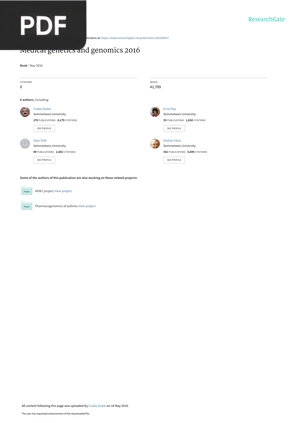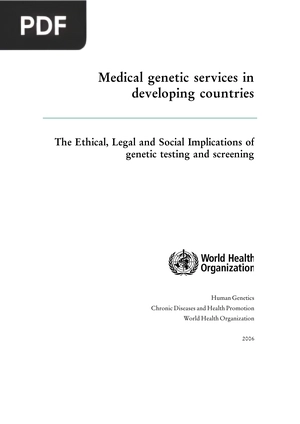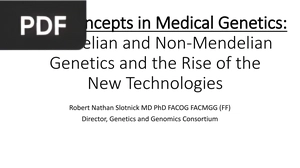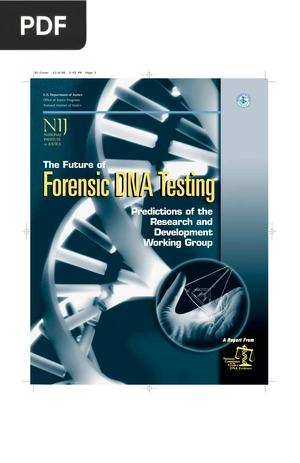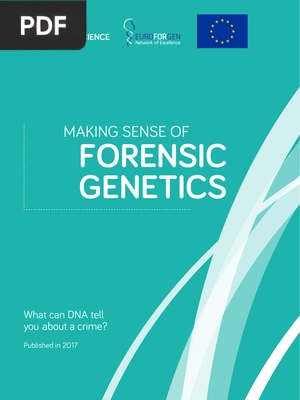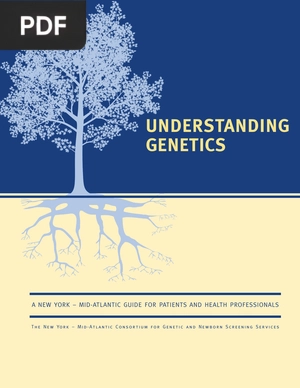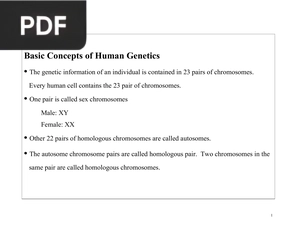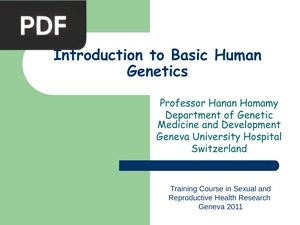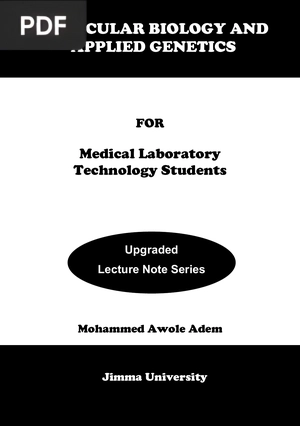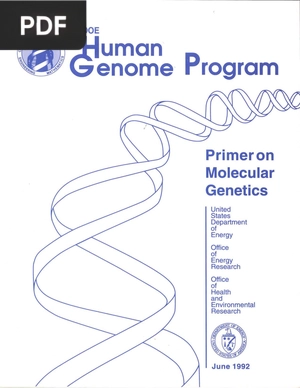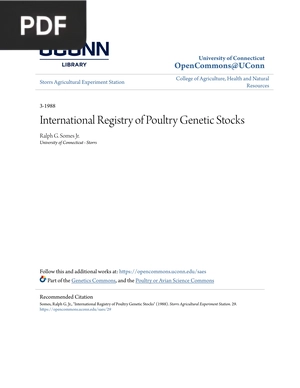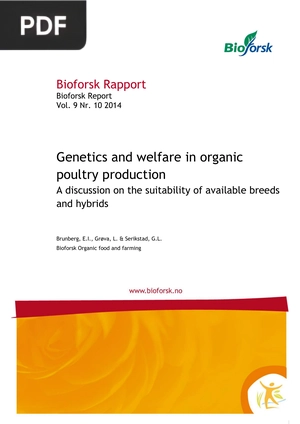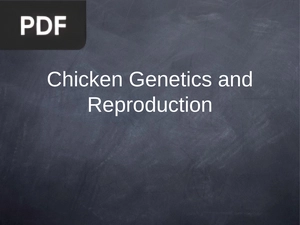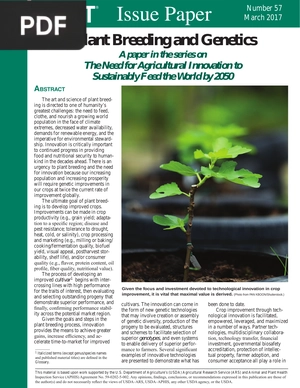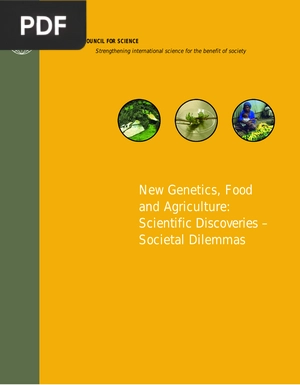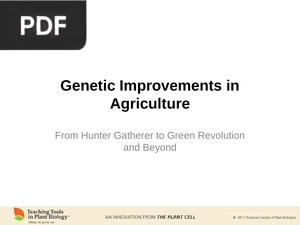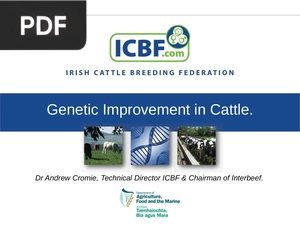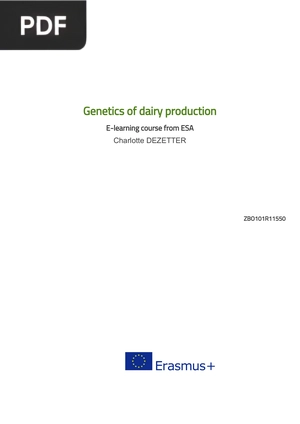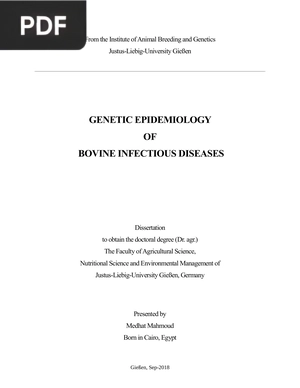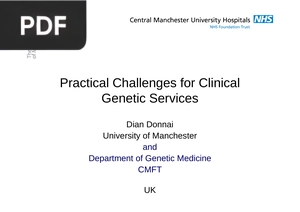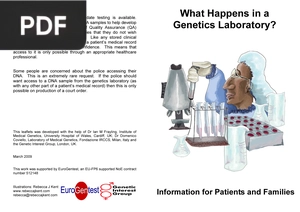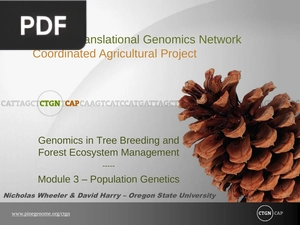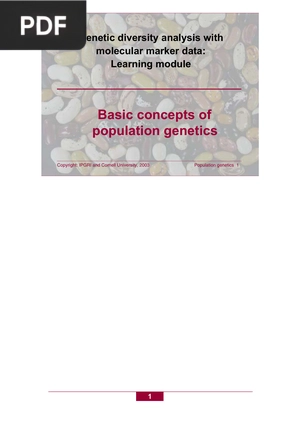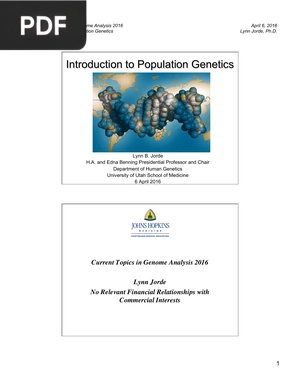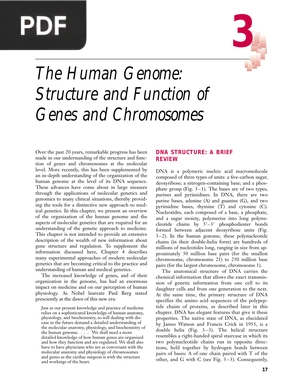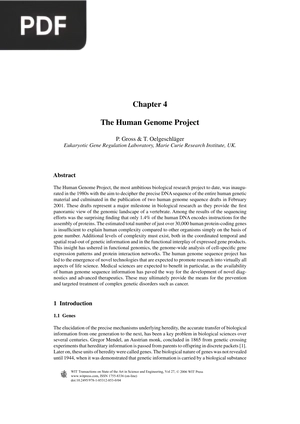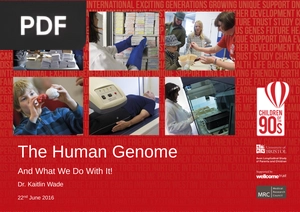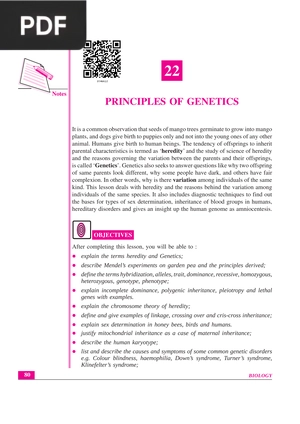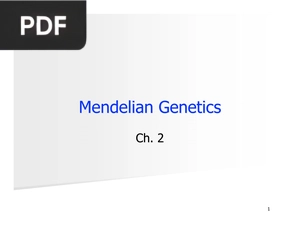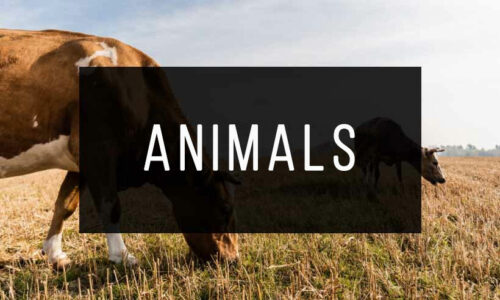To continue expanding our virtual library, we have prepared a topic related to modern science that has helped, to a great extent, to the advancement of mankind. This is our excellent collection of books on genetics in PDF format, which is now available to our community.
Since the discoveries of Gregor Mendel, modern biology has used genetics to study DNA and RNA and how the generation, expression and transmission of genetic information from generation to generation occurs. These processes can be better understood in our PDF genetics books.
Genetics can be defined as the study of genes, the fundamental purpose of which is to investigate heritable traits. It is a branch of biology and is constantly evolving.
It is considered that the first geneticist in history was Gregor Johann Mendel, who developed the well-known Mendelian laws that explain genetic inheritance. His experiments were with different varieties of peas.
These findings were key for biology to find another way to study living organisms. Genetics is very relevant, especially in determining the transmission of diseases from parents to children.
We all have 46 chromosomes, 23 inherited from the mother and 23 inherited from the father. The chromosomes contain the genes and are composed of DNA, which is the code that provides the instructions. In fact, genes tell each cell how to behave.
A genetic abnormality or mutation, in other words, a change in the instructions, can cause diseases or syndromes. Sometimes they are mild, sometimes moderate and sometimes severe, depending on the case.
Genetics has several branches, such as classical genetics, developmental genetics and molecular genetics, among others.
Discover more about the interesting world of this discipline by taking a look at our more than 35 books on genetics in PDF format, available now for download.
Books on Medical Genetics
The organism contains thousands of genes distributed in a unique way with the objective of instructing the functioning of the cells, being this a determining action of the physical features, behaviors, tastes, among other aspects, that the individual acquires through biological inheritance.
Likewise, diseases, pathologies, malformations and different affections are transmitted. Therefore, it is important to obtain knowledge about these clinical manifestations, based on the care, diagnosis and prognosis. In this sense, it is recommended to consult books on medical genetics.
The content of these texts delves into this branch of medicine that studies the treatment of hereditary diseases, covering from the conception of humans until their death. This science is very diverse and is subdivided into several areas: clinical, biochemical, molecular and cytogenetics.
#1 Medical genetics and genomics 2016
Extension: PDF | 306 pages
Medical genetics and genomics 2016 by Csaba Szalai, Erna Pap, Sára Tóth provides a concise overview of genetics and genomics principles. It is valuable for medical students and those seeking updated knowledge in the field.
#2 Medical Genetic Services in Developing Countries
Extension: PDF | 124 pages
Medical Genetic Services in Developing Countries por World Health Organization examines ethical, legal, and social implications of genetic services in developing countries. This PDF is valuable as it identifies key issues and proposes effective management principles.
#3 Basic Concepts in Medical Genetics: Mendelian and Non-Mendelian Genetics and the Rise of the New Technologies (Power Point Presentation)
Extension: PDF | 31 pages
Basic Concepts in Medical Genetics: Mendelian and Non-Mendelian Genetics and the Rise of the New Technologies (Power Point Presentation) por Robert Nathan Slotnick presents a comprehensive overview of medical genetics. It is an excellent resource for grasping the fundamentals of genetic inheritance and emerging technologies.
Books on Forensic Genetics
The breadth of the science that studies the transmission of biological inheritance through DNA over generations is invaluable, as it masters a number of aspects of each individual, such as height, complexion, eye and hair color, among others.
Thanks to it, it is also possible to obtain any type of information, such as that resulting from the examination of a lifeless body or the analysis of the residues of a person who has suffered sexual abuse, whether to confirm identification, paternity or any enigma subject to a criminal investigation.
Forensic genetics books present an explanation of this discipline, which is based on the investigation of human identity through samples of biological fluids, anatomical remains, teeth and various methods that are detailed in these texts.
#1 Forensic Genetics in the Governance of Crime
Extension: PDF | 120 pages
Forensic Genetics in the Governance of Crime por Helena Machado, Rafaela Granja explores the societal implications of forensic genetics in criminal justice. This insightful book offers a critical sociological perspective on DNA technologies' role in crime governance.
#2 Study on DNA Profiling Technology for its Implementation in the Central Schengen Information System
Extension: PDF | 71 pages
Study on DNA Profiling Technology for its Implementation in the Central Schengen Information System por Angers, A., Kagkli, D.M., Oliva, L. This document details the state-of-the-art DNA profiling and the challenges of implementing DNA profiles in the Schengen Information System. It's a comprehensive guide for understanding the nuances of DNA prof...
#3 The Future of Forensic DNA Testing
Extension: PDF | 91 pages
The Future of Forensic DNA Testing por National Commission on the Future of DNA Evidence (NCFDE) predicts advancements in forensic DNA analysis and its impact. It outlines technological projections and their legal, ethical, and social implications, making it essential reading for understanding the evolution of forensic genetics.
#4 Making sense of forensic genetics
Extension: PDF | 21 pages
Making sense of forensic genetics por Sense about Science y EUROFORGEN. This guide demystifies forensic DNA analysis, revealing its capabilities and limitations in criminal investigations. Essential reading for anyone seeking clarity on this complex field and its impact on justice.
Books on Human Genetics
Within the members of a family it is possible to distinguish at a glance the similarity of physical and anatomical features between them, for example, when the son has the same body shape as the father or if the daughter’s eyes are identical to the mother’s.
This has an explanation, and it is due to the genes that each one has in the organism, which are grouped in a certain order along a chromosome to determine the appearance of hereditary characteristics in people.
This information is expanded in books on human genetics, which describe this science whose study is based on determining why traits, attitudes, diseases and behaviors appear in individuals.
#1 Understanding Genetics
Extension: PDF | 104 pages
Understanding Genetics by Genetic Alliance is a comprehensive guide for patients and health professionals, providing a foundational understanding of human genetics. It covers various aspects from basic concepts to ethical considerations, making it a valuable resource for navigating genetic information.
#2 Basic Concepts of Human Genetics (Power Point Presentation)
Extension: PDF | 30 pages
Basic Concepts of Human Genetics (Power Point Presentation) por Michigan Technological University provides a concise overview of fundamental concepts in human genetics, including chromosomes, DNA, and inheritance patterns. It's a great resource for anyone seeking a basic understanding of the field.
#3 The New Genetics
Extension: PDF | 98 pages
The New Genetics by National Institute of General Medical Sciences introduces fundamental concepts of genetics, from DNA structure to gene expression. It highlights advancements in genomics and explores the impact of genetics on health, disease, and the future of medicine.
#4 Human Genetics Lecture #1
Extension: PDF | 97 pages
Human Genetics Lecture #1 por Cristina de Guzman Strong, Ph.D. introduces core concepts. It covers genetic variations, Mendelian diseases, and the Human Genome Project. A great introduction to the world of human genetics.
#5 Introduction to Basic Human Genetics
Extension: PDF | 39 pages
Introduction to Basic Human Genetics by Hanan Hamamy provides a concise overview of fundamental concepts in human genetics. It covers genetic diseases, DNA structure, mutations, and chromosome biology, essential for understanding inherited conditions.
Books on Molecular Genetics
The gene is a unit that encodes inheritance information, in other words, it is the determinant of whether a human being resembles his or her father or mother. This segment is composed of molecules that store biological data and decide its generational transmission.
The detail of this information is expanded in books on molecular genetics, where a detailed explanation of this science that studies the molecular structure (as mentioned above), the function and replication of each particle, as well as the purpose of DNA and RNA within the organism is presented.
By combining its method with that of biology, this discipline helps to understand the origin of the specific mutations that produce diseases and the reason for the inheritance of specific characteristics.
#1 Molecular Biology and Applied Genetics for Medical Laboratory Technology Students
Extension: PDF | 529 pages
Molecular Biology and Applied Genetics for Medical Laboratory Technology Students por Mohammed Awole Adem provides a concise overview of molecular biology principles and applied genetics. Explore this lecture note series to gain a solid foundation in genetics and molecular techniques relevant to medical laboratory technology.
#2 Introduction to Molecular Genetics and Genomics
Extension: PDF | 132 pages
Introduction to Molecular Genetics and Genomics by Alfred D. Hershey and Martha Chase provides a foundational overview of molecular genetics principles. It explores DNA structure, replication, and gene expression, offering valuable insights for understanding genetics.
#3 Primer on Molecular Genetics
Extension: PDF | 44 pages
Primer on Molecular Genetics by Denise Casey provides a foundational overview of molecular genetics principles. It outlines the structure of DNA, genes, and chromosomes, and it explores mapping and sequencing technologies of the Human Genome Project.
Poultry Genetics Books
In poultry farming, the transmission of genes is manipulated with the aim of obtaining improved crosses, resulting in pure and healthy species, as well as a superior quality production that benefits this sector economically.
As in humans, this process is determined by biological inheritance, where animals of the same generation and lineage are experimented with to favor their qualities and characteristics, as in the case of broilers and laying hens.
To know all the tools, techniques and methods applied in this science in charge of studying the molecular composition of these segments in birds, it is ideal to consult the poultry genetics books, whose bibliography will be a useful guide for poultry farmers.
#1 International Registry of Poultry Genetic Stocks
Extension: PDF | 113 pages
International Registry of Poultry Genetic Stocks by Ralph G. Somes Jr. is a valuable directory for researchers and breeders. It catalogs specialized lines, strains, mutations, breeds, and varieties of chickens, quail, and turkeys.
#2 Genetics and Welfarein Organic Poultry Production
Extension: PDF | 30 pages
Genetics and Welfarein Organic Poultry Production por Brunberg, E.I., Grova, L. & Serikstad, G.L. This report discusses the suitability of available poultry breeds and hybrids for organic production systems, emphasizing animal welfare and genetic adaptation. It provides valuable insights into the interplay between genetics, environment, and welfare...
#3 Chicken Genetics and Reproduction (Presentation)
Extension: PDF | 34 pages
Chicken Genetics and Reproduction (Presentation) por U.S. Poultry & Egg Association. It explains genetic selection for desirable traits in poultry, covering domestication, dual-purpose breeds, and the transition to specialized lines. A concise overview for understanding modern poultry breeding.
Books on Agricultural Genetics
If in humans and animals there is a process of gene transmission, what happens among plants? Within this kingdom, these particles are manipulated to germinate prototypes with improved characteristics, which represents a point in favor of farmers.
Through this procedure, it is possible to obtain specimens of superior quality in terms of size, shape, color, life span, climate resistance, among others, which translates into effective production and guaranteed food safety.
Delving into the literature of agricultural genetics books will help any reader, mainly farmers, to understand the science that studies this process of crossing between plants to obtain the desired crops.
#1 Plant Breeding and Genetics
Extension: PDF | 24 pages
Plant Breeding and Genetics by P. Stephen Baenziger, Rita H. Mumm, Rex Bernardo provides a crucial overview of plant breeding's role in global food security. Explore innovation in genetics and technology driving sustainable agriculture for a growing population.
#2 New Genetics, Food and Agriculture: Scientific Discoveries – Societal Dilemmas
Extension: PDF | 58 pages
New Genetics, Food and Agriculture: Scientific Discoveries – Societal Dilemmas por International Council for Science reviews 50 scientific reports on modern genetics applications in agriculture and food. Explore the convergence, divergence, and knowledge gaps, influencing policy and public perceptions.
#3 Genetic Improvements in Agriculture (Presentation)
Extension: PDF | 98 pages
Genetic Improvements in Agriculture (Presentation) por Teaching Tools in Plant Biology explores the history and future of genetic modifications in agriculture. It highlights key advancements and ongoing challenges, emphasizing the role of plant breeding in addressing global issues.
Books on Bovine Genetics
The transmission of genes in cattle is a determining factor to improve the production of these species, since the biological characteristics of each animal are strategically studied, and based on this result, the crossbreeding is defined to obtain powerful offspring.
All the information corresponding to the transmission of traits, characteristics and qualities in the bovine sector can be found in the books on bovine genetics, created to guide producers in obtaining genetically superior animals.
Through these texts, the reader will have access to the techniques and strategies that must be put into practice to obtain fattening calves, fertile heifers, among others that will contribute to increase the economic benefit of this activity.
#1 Genetic Improvement in Cattle
Extension: PDF | 29 pages
Genetic Improvement in Cattle por Dr Andrew Cromie details the Irish Cattle Breeding Federation's approach to improving cattle genetics through collaboration and data-driven strategies. This presentation provides a valuable overview of the ICBF's structure and its impact on the Irish dairy and beef industry.
#2 Genetics of Dairy Production
Extension: PDF | 28 pages
Genetics of Dairy Production by Charlotte Dezetter provides an overview of the principles of genetics applied to dairy cattle. It covers Mendelian genetics, quantitative genetics, and genetic selection strategies for improving dairy production traits.
#3 Genetic Epidemiology of Bovine Infectious Diseases
Extension: PDF | 151 pages
Genetic Epidemiology of Bovine Infectious Diseases by Medhat Mahmoud explores the genetic factors influencing disease resistance in cattle, focusing on German Holstein populations. This PDF offers valuable insights into using genomic data for breeding healthier and more productive livestock.
Books on Clinical Genetics
Sometimes, the DNA sequence of a single gene undergoes unintentional alterations that result in disorders in the individual, which can be biologically transmitted between families, through generations, and may manifest themselves in the future.
When these types of medical conditions occur, patients are cared for by physicians who specialize in the branch that studies these types of diseases, which are described in clinical genetics textbooks.
The content of these texts includes all the information related to the diagnosis, treatment and care that people with these conditions should receive, as well as the steps to be taken to prevent the onset of these conditions.
#1 Practical Challenges for Clinical Genetic Services (Power Point Presentation)
Extension: PDF | 32 pages
Practical Challenges for Clinical Genetic Services (Power Point Presentation) by Dian Donnai presents an overview of the evolving landscape of clinical genetics, highlighting key challenges and advancements. This presentation offers valuable insights into the practical aspects of genetic services and the changing role of genetics in medicine.
#2 The new genetics and clinical practice (Article)
Extension: PDF | 5 pages
The new genetics and clinical practice (Article) por Ronald J A Trent, Robert Williamson, Grant R Sutherland discusses the emerging role of DNA testing in diagnosis and prediction of disease. It emphasizes the importance of understanding genetic implications for both individuals and families.
#3 What Happens in a Genetics Laboratory? (Article)
Extension: PDF | 6 pages
What Happens in a Genetics Laboratory? (Article) por Dr Ian M. Frayling and Dr Domenico Coviello is a concise guide outlining the processes within a genetics laboratory. It explains genetic testing methodologies and the analysis of DNA and chromosomes, making it a valuable resource for understanding clinical genetics.
Books on Population Genetics
The determination of the transformation of species depends on the number of individuals that interbreed, the number of offspring they leave behind, the composition of the genes they possess in the organism and how these vary when transmitted through the generations.
For more information on this topic, it is recommended to consult books on population genetics, whose content includes all aspects related to the science that describes the change and distribution of the allele frequency in a group of individuals of the same species, which are isolated from other related individuals.
The bibliography of these texts constitutes a contribution to the scientific world to explain evolutionary phenomena, and also serves as a support to those students who are beginning in this discipline, as well as to any expert in the area.
#1 Module 3, Population Genetics
Extension: PDF | 33 pages
Module 3, Population Genetics por Nicholas Wheeler & David Harry introduces fundamental principles. Explore allele frequencies, Hardy-Weinberg equilibrium, and evolutionary forces shaping genetic diversity within populations.
#2 Basic Concepts of Population Genetics (Presentation)
Extension: PDF | 47 pages
Basic Concepts of Population Genetics (Presentation) por Crop Genebank Knowledge Base explores core principles like Hardy-Weinberg equilibrium and allele frequencies. Understand the foundations of genetic variation and evolution within populations to analyze genetic diversity.
#3 Introduction to Population Genetics (Presentation)
Extension: PDF | 46 pages
Introduction to Population Genetics (Presentation) por Lynn B. Jorde. This PDF provides an overview of human genetic variation, evolution, and the factors influencing it. It's a valuable resource for understanding population structure and biomedical implications.
Books on the Human Genome
The complexity of the biological composition of each individual is almost indescribable due to the number of particles found within the organism, which in turn fulfill a specific function based on the transmission of genetic information and the production of proteins.
In this sense, books on the human genome teach how the DNA sequence distributed in 23 pairs of chromosomes located in each cell (22 pairs of autosomes and one pair of sex chromosomes) provide all the information regarding the purpose and individual mission of these particles.
Through these texts, the reader will get support to know all the terms involved in this topic, such as alleles, molecules, exons, among others; mainly to those students who are starting in the world of genetics.
#1 The Human Genome: Structure and Function of Genes and Chromosomes
Extension: PDF | 16 pages
The Human Genome: Structure and Function of Genes and Chromosomes por Masarykova univerzita describes the structure and function of genes and chromosomes. It is valuable for understanding molecular genetics in medicine.
#2 The Human Genome Project
Extension: PDF | 30 pages
The Human Genome Project by P. Gross & T. Oelgeschläger outlines the ambitious effort to decipher the human genetic code and its initial findings. This chapter offers a valuable overview of the project's goals, strategies, and early insights into human biology.
#3 The Human Genome And What We Do With It! (Presentation)
Extension: PDF | 41 pages
The Human Genome And What We Do With It! (Presentation) por Dr. Kaitlin Wade es una introducción concisa al genoma humano. It highlights its structure, mutations, and the power of genome-wide association studies.
Books on Mendelian Genetics
The transmission of genes through inheritance is based on the work done by an Australian scientist and friar, who in the 1960s made a cross with pea plants, resulting in seeds of different styles and some similar ones.
As a result of this discovery the Mendelian laws emerged, known as the basic rules governing inherited biological transmission, which are described in detail in books on Mendelian genetics.
The literature of these texts shows all the information related to these rules that regulate the uniformity of the hybrids of the first generation, the separation or disjunction of the genes that form the pair of allelomorphs, and the test cross and backcrossing.
#1 Principles of Genetics
Extension: PDF | 27 pages
Principles of Genetics por The National Institute of Open Schooling is a concise guide to understanding fundamental concepts in genetics. Explore heredity, variation, and Mendelian laws, making it a valuable resource for students and enthusiasts alike.
#2 Mendelian Genetics (Presentation)
Extension: PDF | 34 pages
Mendelian Genetics (Presentation) por California State University, Northridge provides an overview of Mendelian genetics principles. It explains inheritance patterns, including monohybrid crosses, segregation, and test crosses, with examples.
Well, this was our collection of Genetics books in PDF format. We hope you liked it and find your next book!
If you found this list useful, don’t forget to share it in your social networks. Remember that «Sharing is Caring».
Do you want more Biology books in PDF format?
Biology Books



